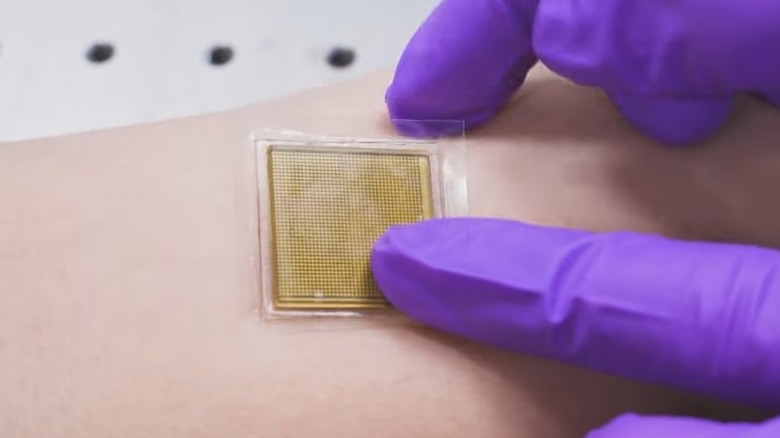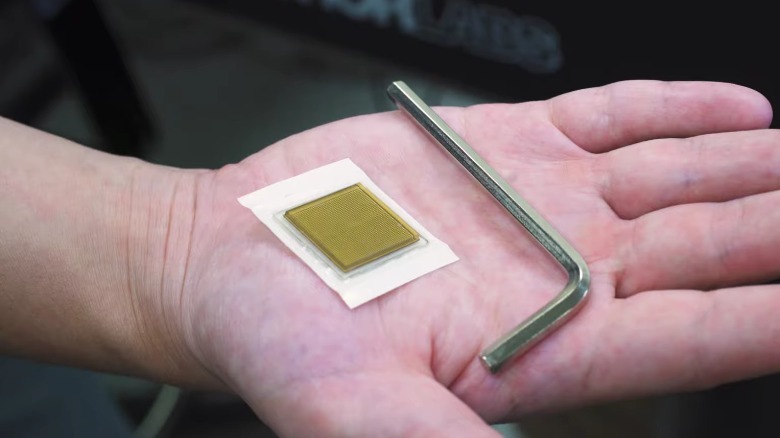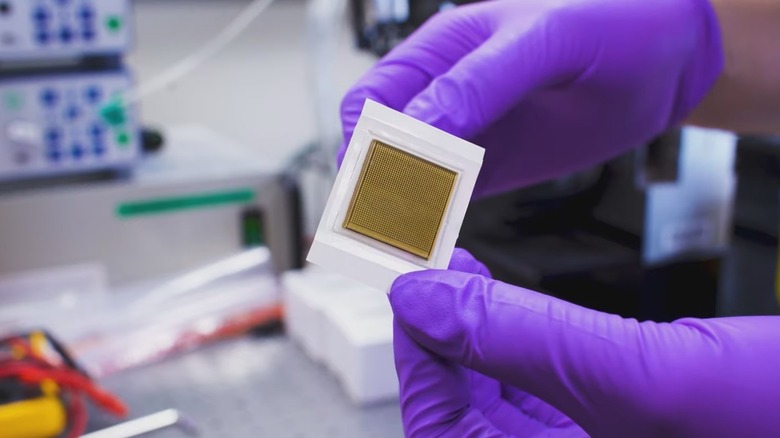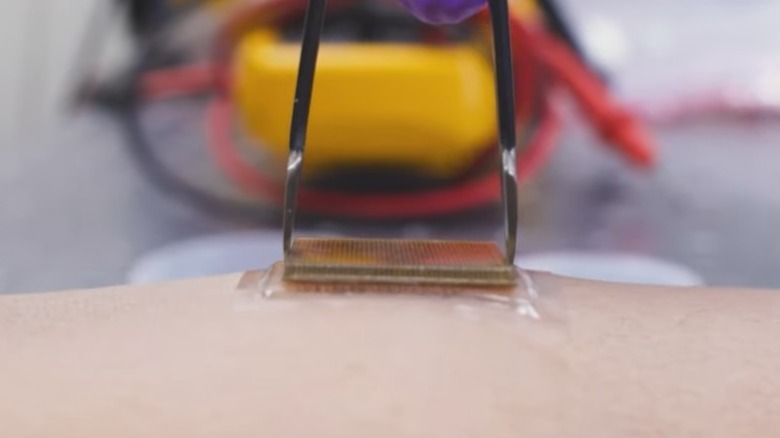This Skin-Sticking Ultrasound Patch Is Like A Tricorder Band-Aid
In the field of medical science, an ultrasound is a widely used method of sending sound waves through a body to produce images of internal organs and tissues. It generally requires the use of bulky and expensive machinery as well as expert supervision. A team of engineers at MIT has created a stamp-sized skin patch that will do the demanding job with ease, providing a clear look at internal organs like the lungs and heart in real-time.
The patch is a rigid piezoelectric probe array that attaches to the skin via a transparent gel material. Once attached, it can provide a continuous look at the human body's vital innards for approximately 48 hours. A doctor or technician can easily apply this patch over the body part that needs scanning.
Once the patch has been applied to the right spot, it is connected to a machine that records the ultrasound signal and converts it into a visible image. Detailed in a paper published in Science, the patch is a remarkable non-invasive technique for imaging body parts and organs that could very well revolutionize the sector.
During the test phase, the ultrasound patch was able to stream a live view of a patient's abdominal parts, heart, and lungs. The hydrogel elastomer adhesive used in testing was (and is) strong enough that a person can wear the patch while engaged in activities like running, riding a bike, or lifting weights. A key advantage of the ultrasound sticker is that it won't require continuous supervision by a technician, human or robotic.
The next breakthrough in medical imaging
Right now the team is working on a wireless iteration of the patch so that it can be worn anywhere and made available to be purchased over the counter, just like Band-Aids at a pharmacy. The idea is to link the patch with a smartphone and deploy AI algorithms to do the scanning when needed.
"With a few patches on your body, you could see your internal organs," notes Xuanhe Zhao, a professor of mechanical engineering and civil and environmental engineering at MIT. Another key achievement is that the ultrasound patch created by the team produces high-resolution imagery, while previous attempts by experts could only manage low-resolution visuals of the internal organs.
The ultrasound sticker — which measures around three millimeters thick and two square millimeters across — could one day also help detect tumors and track a fetus' development in a mother's womb. This is only the latest in a line of impressive medical inventions to have been delivered by MIT over the past few years. In February 2021, an MIT team also created a surgical tape for covering tears and wounds on internal organs, and could one day replace hand-sewn sutures.
Last year, another team from MIT developed a sensor-embedded skin patch that was said to be capable of monitoring skin conditions and even cancer. In 2019, experts at MIT also detailed a dye made of nanocrystals that could store medical information under the skin, while staying invisible to the naked eye.



